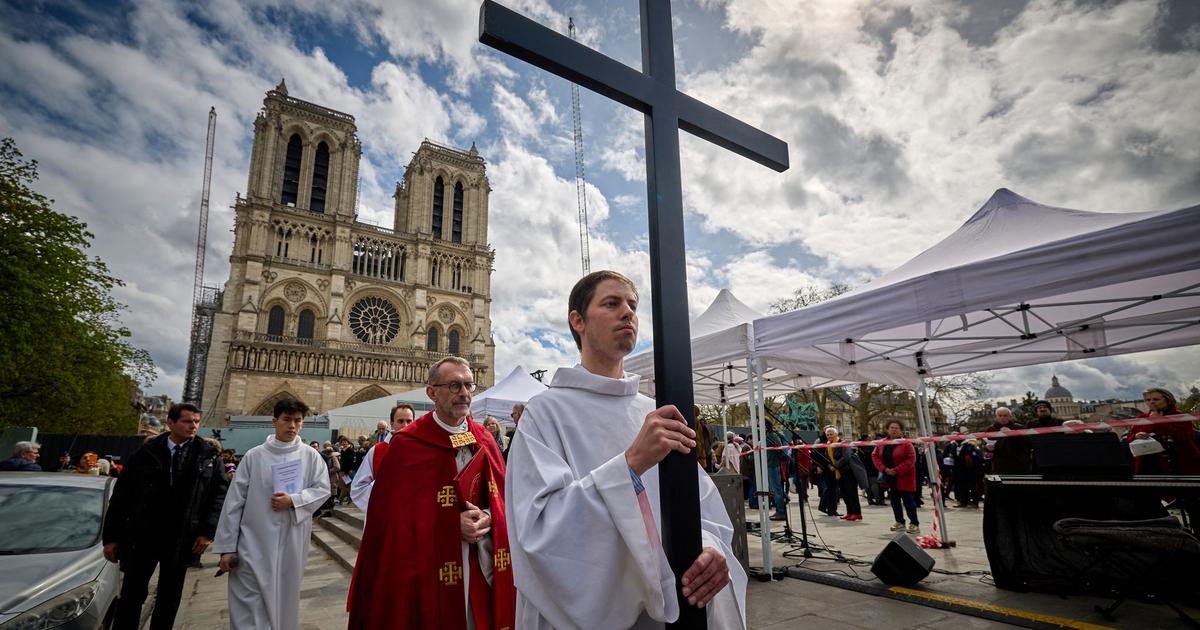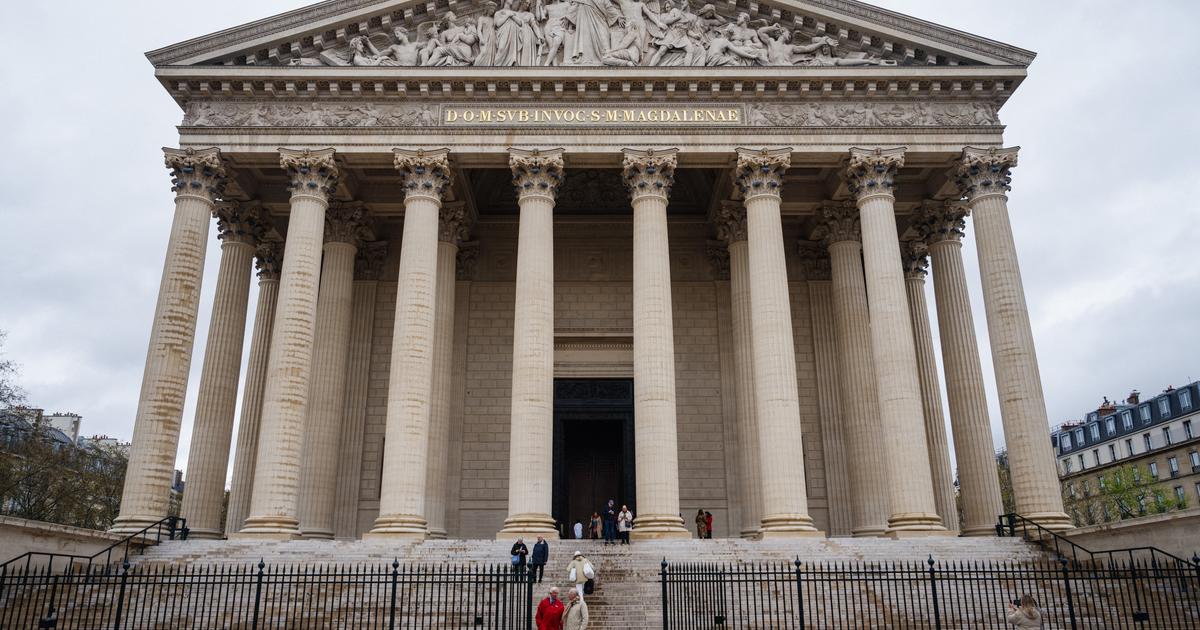Despite their color, the fluorescent orange paint letters inscribed at the foot of the tree are ultimately discreet in view of its height.
“ND”, for Notre-Dame de Paris, announces the unique future of this sessile oak.
The tree rooted for more than a century in the forest of Meudon (Hauts-de-Seine) is one of the very first felled this week in Ile-de-France, in anticipation of the reconstruction of the cathedral, devoured by the flames on April 15, 2019.
Was it necessary to reconstruct identically the spire drawn by Viollet-Leduc, which peaked 96 meters above the square since 1854, until it collapsed a little over an hour after the start of the fire?
Emmanuel Macron ruled last July.
It is therefore necessary to find a thousand oaks, 1190 to be exact, to redo the framework of the spire, the transept and the sleepers.
Straight oaks, with a substantial diameter, and of good height.
However, only hundred-year-old trees, or even bicentennial trees, can boast of such statures.
Don't panic, reassure forestry experts.
In forests, there are enough such specimens.
“They represent 0.1% of French oak wood intended for use in construction or furnishings,” assures the public establishment responsible for the conservation and restoration of the building.
Trees are sourced equally from public and private forests
In an unprecedented outpouring of solidarity, the foresters surveyed the massifs to identify the perfect specimens and provide them free of charge to the monument.
All metropolitan regions are participating in the effort.
Half of the oaks of Notre-Dame come from public forests (32 state-owned and 70 communal), the other half from private.
For the western part of Ile-de-France managed by the ONF, Thomas Hazouard, wood sales technician, supervised the operation.
“For the framework, we are looking for fairly long trunks and at least 75 cm in diameter.
The order, for us, was logs
(Editor's note: the part of the trunk that can be exploited for the site)
from 6 to 8 meters, but other regions, such as Sarthe, supplied logs of more than 20 m ”, he explains.
Video Meudon Forest: the first oaks felled to rebuild the framework of Notre-Dame de Paris
During this time, the loggers are busy creating a notch then a hinge at the foot of the selected oak, after having attached it to a cable pulled by a tractor to guide its fall.
Just before, they prepared the ground, the "place of felling", to prevent it from sweeping other trees in its fall.
Newsletter Essentials of 75
A tour of the news in Paris and the IDF
Subscribe to the newsletterAll newsletters
Everything is ready, Leo arms his chainsaw and begins to saw.
First slowly, cautious.
Then the wind picks up and worry can be read on the faces of the foresters.
The lumberjack accelerates and leaves his post at the last second.
“When the wind blows above 60 km / h, it's super dangerous,” explains one of his colleagues.
The tree can pitch and collapse.
The risk is that it breaks at the foot and splits along its entire length.
"
Tracking to the final destination
Using a remote control, the cable connected to the tractor is stretched a little more, and the oak tree falls heavily.
Professionals rush to his bedside: “It's good, it's intact.
It is thanks to Leo, if he had not managed to cut quickly enough, he would be split, ”breathes Thomas Hazouard, relieved.
"It is 27 m, I had good sight", welcomes a forester.
A bad surprise, however: at the heart of the trunk, part of the rings is "rolled" (unstuck) which indicates fragility.
It will therefore be necessary to amputate the 11-meter log, without knowing how far the fault goes.
"We have room, we will cut to 2 meters so that the purge is not lost, it will be used for crossings", adds Thomas Hazouard.
Meudon, March 11, 2021. The trees to be felled are marked "ND" and have a number which will allow them to be followed to the end.
LP / Jean-Baptiste Quentin
The first oak in the forest of Meudon is called "ND", like all its congeners intended for the cathedral, and bears a number which will follow it until the end: 859. All of its characteristics and its geolocation are indicated in a software.
In the meantime, it should be skidded within three months, to be stored in the shade and in the open air.
In the second half of the year, it will be transferred to a sawmill to be cut and will have to wait another 12 to 18 months in order to dry naturally, before reaching the carpenters' workshops in early 2023.
After these two oaks in the forest of Meudon, they will go and collect eight in the forest of Marly (Yvelines) and two others in Dourdan (Essonne).
Next week, it will be the turn of Seine-et-Marne.
"It is not the ONF who gives them, it is each French person: these forests belong to the State", recalls the technician.
If we add the regional, departmental or communal domains and those private, Ile-de-France, of which 25% of the territory is forest, will provide some 200 oaks.















